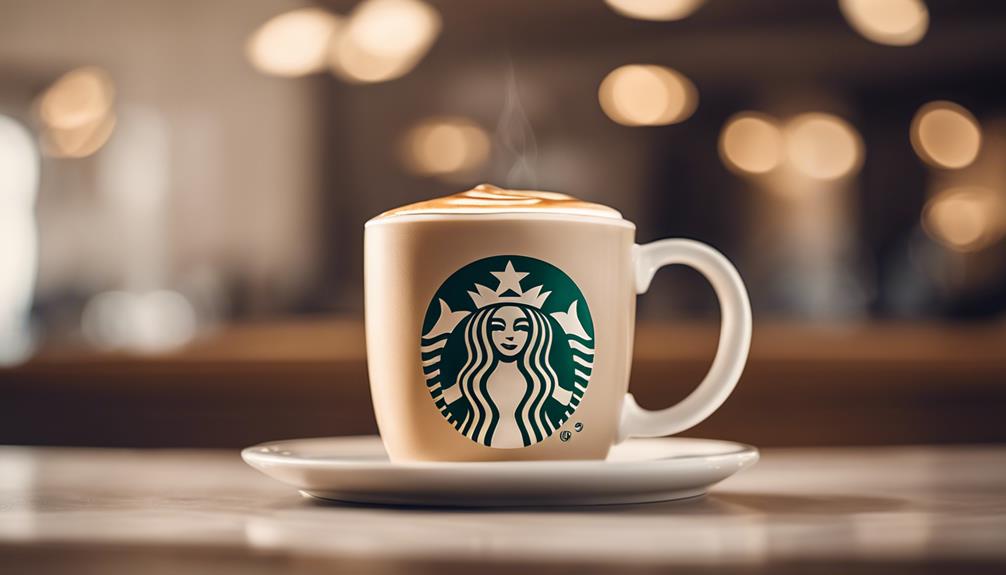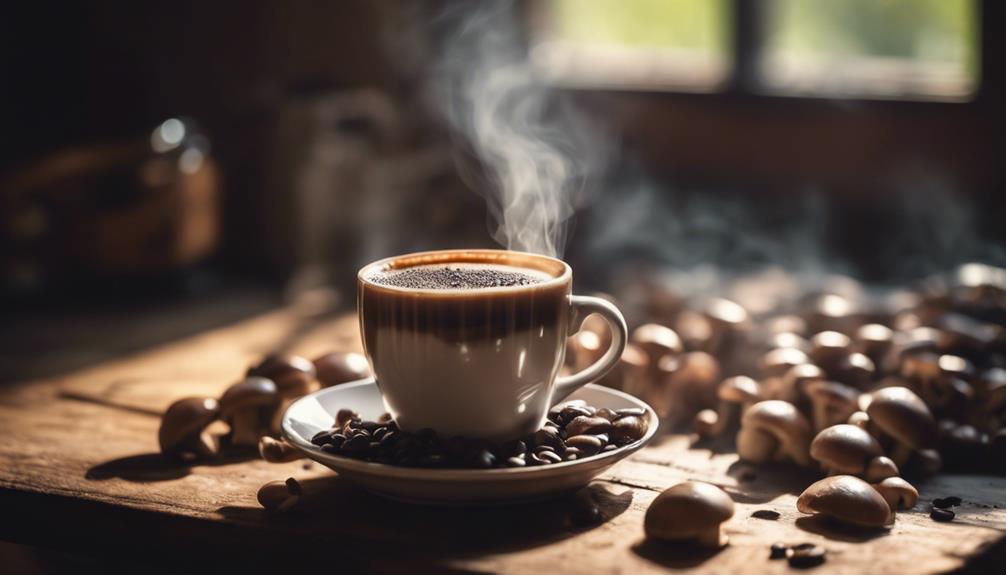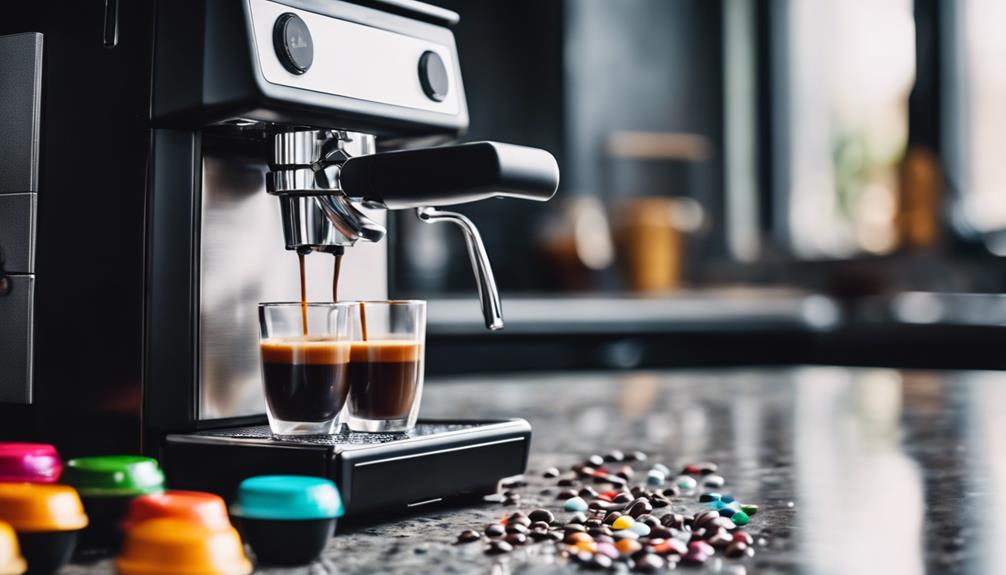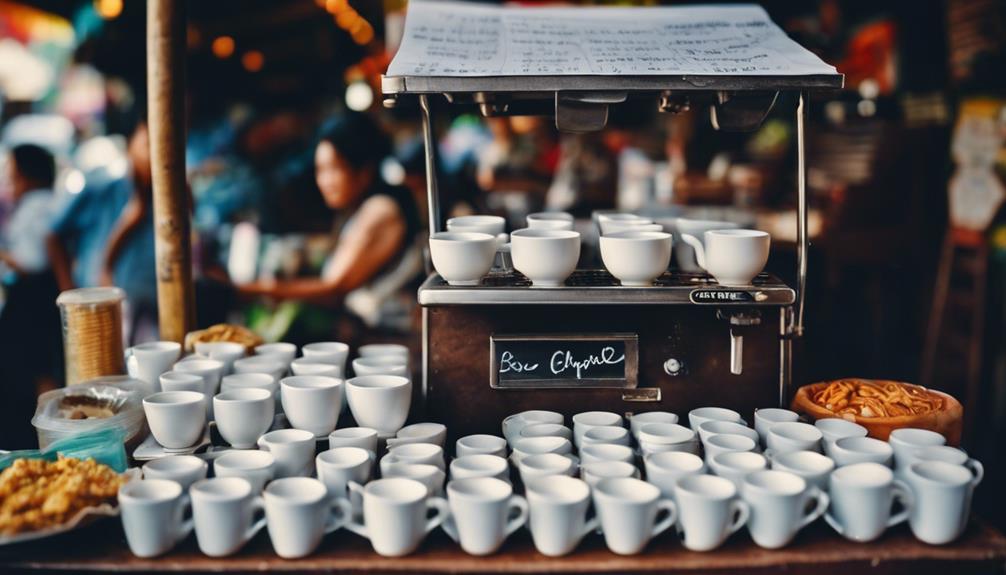You are in search of a coffee that is both smooth and flavorful, and that is precisely what you will find with Starbucks Blonde Espresso Roast, a light roast coffee that is carefully crafted to highlight the delicate, sweet flavors of 100% Arabica beans sourced from Latin America and East Africa. Due to its shorter roasting time, this coffee maintains its natural flavors, resulting in a perfect balance of acidity and sweetness. It is recommended to brew this coffee using pour-over or drip methods at the optimal temperature, and its creamy texture and inviting aroma make it an ideal companion for pastries and light desserts. As you delve deeper into this distinctive roast, you will uncover even more nuances that make it truly unique.
Key Takeaways
- Starbucks Blonde Espresso Roast is a light roast designed to highlight subtle, sweet flavors with citrus and floral hints.
- Made from 100% Arabica coffee beans, primarily sourced from Latin America and East Africa, it provides a smooth and subtly sweet flavor.
- The roast is crafted to retain natural flavors, resulting in balanced acidity and sweetness, perfect for pour-over or drip brewing methods.
- With a creamy mouthfeel and inviting aroma, it pairs well with pastries and light desserts, making it a popular choice among coffee enthusiasts.
Understanding Blonde Espresso Roast
As you explore the world of espresso, you'll likely encounter the term 'Blonde Espresso Roast' and wonder what sets it apart from other roast levels.
Fundamentally, a Blonde Espresso Roast is a type of light roast that's crafted to bring out the subtle, sweet flavors of the coffee beans.
Starbucks' version of Blonde Espresso Roast is made from 100% Arabica coffee beans, sourced primarily from Latin America and East Africa, which are known for their vibrant notes and high quality.
Because of the shorter roast time, the coffee beans retain more of their natural flavors, resulting in a balanced acidity and sweetness that's perfect for those who prefer milder coffee options.
When it comes to brewing methods, you'll get the best out of your Blonde Espresso using pour-over or drip methods, with temperatures between 195°F to 205°F to highlight its citrus and floral hints.
Product Features and Benefits
When you choose Starbucks Blonde Espresso Roast, you can expect a unique combination of features that elevate your coffee experience.
This light roast profile provides a smooth and subtly sweet flavor, perfect for those who prefer milder coffee options. Crafted from 100% Arabica beans sourced from Latin America and East Africa, you can trust that you're getting high-quality flavor and ethical sourcing practices.
The Blonde Roast is specifically designed for espresso drinks, and its compatibility with the Flavia Barista machine allows for a unique brewing experience.
As you take a sip, you'll notice a creamy mouthfeel and inviting aroma that pairs well with pastries and light desserts, enhancing the overall coffee experience. The brewing method guarantees a balanced acidity and sweetness, making it a popular choice among coffee enthusiasts seeking a revitalizing caffeine boost.
With Starbucks Blonde Espresso Roast, you can enjoy a delightful coffee experience that's both smooth and flavorful.
Brewing and Serving Guidelines

To access the full potential of Starbucks Blonde Espresso Roast, follow these brewing and serving guidelines to guarantee a perfectly balanced cup every time.
For a standard espresso shot, use 10g of Starbucks ground coffee to 180ml of water, and brew using the Flavia Barista machine, which facilitates optimal flavor extraction.
Make sure the brewing temperature is between 195°F to 205°F to enhance the coffee's smoothness and sweetness. Regularly clean and maintain your Flavia Barista machine to preserve the quality of your brew.
When serving, consider pairing your Blonde Roast with light desserts and pastries, as its lighter flavor profile complements these sweet treats perfectly.
This will elevate your overall coffee experience and allow you to appreciate the nuances of the roast.
Taste Profile and Characteristics
You'll experience a smooth and subtly sweet flavor when you try Starbucks Blonde Espresso Roast, thanks to its light roast profile that makes it an easy-drinking choice for coffee enthusiasts.
The creamy mouthfeel and primary flavor notes of sweetness will delight your senses, while the light, inviting aroma and clean aftertaste leave you wanting more.
This roast is carefully crafted to retain more of the coffee bean's natural flavors, resulting in a balanced acidity that appeals to those seeking milder coffee options.
As you sip, you'll appreciate the smoothness and drinkability that customers rave about, making it a popular choice among those new to coffee or preferring lighter flavors.
The taste profile of Blonde Espresso Roast is truly unique, with a delicate balance of flavors that will leave you feeling satisfied but not overwhelmed.
Whether you're a coffee connoisseur or just discovering your coffee style, you'll love the subtle nuances of this expertly roasted brew.
Quality and Sourcing Standards
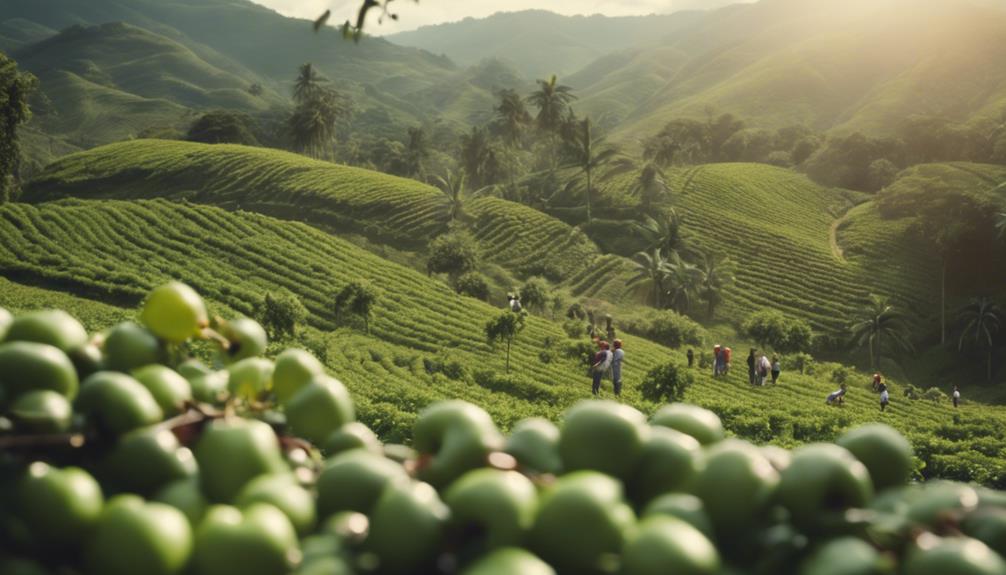
Starbucks' commitment to quality and sourcing standards is evident in their Blonde Espresso Roast, which is crafted using only the finest 100% Arabica coffee beans sourced from renowned regions.
You can trust that the beans are of superior quality, known for their rich flavor and smooth taste. The coffee beans are primarily sourced from Latin America and East Africa, regions famous for producing high-quality coffee varieties.
What's more, Starbucks emphasizes sustainable sourcing practices, ensuring that their coffee is ethically obtained while supporting farmers and communities.
The roasting process for Blonde Espresso Roast is carefully crafted to preserve the beans' natural flavors.
With a shorter roast time, the resulting flavor profile is smooth and mellow, with notes of sweetness. Quality assurance is maintained throughout the roasting process, guaranteeing consistency and excellence in every batch of coffee produced.
You can be confident that every cup of Starbucks Blonde Espresso Roast you brew will meet the highest standards of quality and flavor.
Sustainability and Recycling Efforts
As you savor every cup of Blonde Espresso Roast, you're supporting a brand that's dedicated to reducing its environmental footprint through sustainable sourcing and recycling efforts.
Starbucks is committed to sustainability, ensuring that 100% of its Arabica coffee beans are sourced responsibly, promoting high-quality production and responsible farming practices. The company takes environmental responsibility seriously, and that's evident in its recycling initiatives.
Through the Nespresso recycling program, you can return used coffee capsules to designated collection points, making it easy to participate in waste reduction efforts. Need a recycling bag? Just call customer service, and they'll send one your way.
Starbucks is continually working towards reducing waste and promoting responsible disposal practices across its operations. By engaging in community involvement and local initiatives, the company is enhancing sustainability and supporting environmental stewardship.
Purchasing and Availability Options
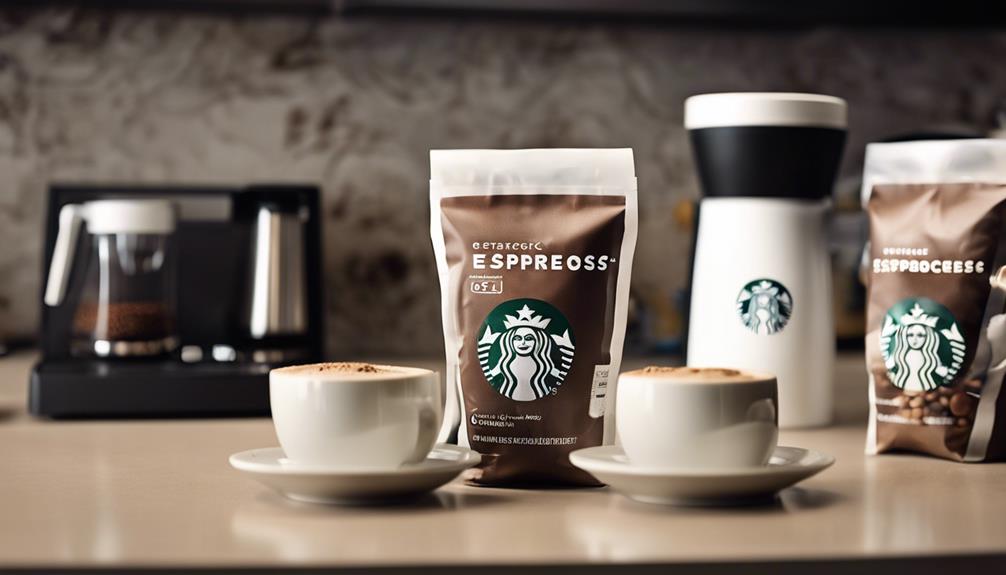
Now that you've got a taste for the brand's commitment to sustainability, it's time to get your hands on the Starbucks Blonde Espresso Roast, available for purchase online and at select retail locations for $13.00.
When purchasing online, you can pay using various methods, including credit cards and PayPal. You'll also have the option to choose between whole bean and ground formats, catering to your personal brewing preferences.
It's essential to note that the Starbucks Blonde Espresso Roast is exclusively compatible with the Flavia Barista brewing machine, which is required for ideal brewing. This means you'll need to have this machine to fully enjoy the espresso's flavor profile.
Throughout the year, seasonal promotions may feature variations of the Blonde Roast, enhancing its availability and giving you more opportunities to try it out.
With online and retail purchasing options, getting your hands on this espresso roast has never been easier. So, go ahead and treat yourself to a high-quality espresso experience that aligns with your values and tastes.
Frequently Asked Questions
What Does Starbucks Blonde Espresso Roast Taste Like?
When you take a sip, you'll notice a smooth, subtly sweet flavor that's not too bold. You'll pick up on creamy notes and a light aroma, finishing with a clean, mild aftertaste that's easy to enjoy.
Is Starbucks Blonde Roast the Same as Light Roast?
You're wondering if Starbucks Blonde Roast is the same as light roast. The answer is yes, it is classified as a light roast due to its shorter roast time, preserving the coffee bean's natural flavors.
What Is the Difference Between Starbucks Blonde Espresso and Regular Espresso?
You're wondering what sets Starbucks Blonde Espresso apart from regular espresso. The main difference is the roast level: Blonde Espresso is lighter, yielding a smoother, sweeter flavor, whereas regular espresso is darker, bolder, and more intense.
Is Blonde Roast the Strongest Coffee at Starbucks?
You're wondering if Blonde Roast is the strongest coffee at Starbucks, but surprisingly, it's not. Despite having a higher caffeine level per ounce, its light roast gives it a smoother, more subtle flavor, making it milder than darker roasts.
Conclusion
As you savor the last drop of Starbucks Blonde Espresso Roast, you'll feel like a master artist, having expertly crafted a masterpiece of flavor and aroma.
With its light and flavorful profile, this brew is the perfect canvas for your creativity, waiting to be transformed into a work of art with every sip.
So, go ahead and get creative – your taste buds will thank you!
